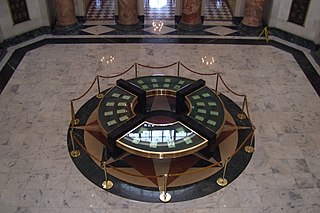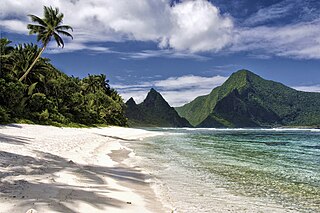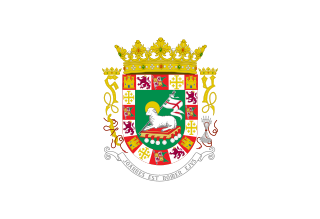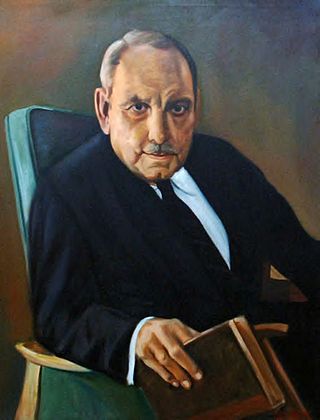Related Research Articles

The politics of Puerto Rico take place in the framework of a democratic republic form of government that is under the jurisdiction and sovereignty of the United States Congress as an organized unincorporated territory. Since the 1898 invasion of Puerto Rico by the United States during the Spanish–American War, politics in Puerto Rico have been significantly shaped by its status as territory of the United States. The nature of Puerto Rico's political relationship with the United States is the subject of ongoing debate in Puerto Rico, in the United States, the United Nations and the international community, with all major political parties in the archipelago calling it a colonial relationship.

The Foraker Act, Pub. L. 56–191, 31 Stat. 77, enacted April 12, 1900, officially known as the Organic Act of 1900, is a United States federal law that established civilian government on the island of Puerto Rico, which had recently become a possession of the United States as a result of the Spanish–American War. Section VII of the Foraker Act also established Puerto Rican citizenship and extended American nationality to Puerto Ricans. President William McKinley signed the act on April 12, 1900 and it became known as the Foraker Act after its sponsor, Ohio Senator Joseph B. Foraker. Its main author has been identified as Secretary of War Elihu Root.

The government of the Commonwealth of Puerto Rico is a republican democracy established by the Constitution of Puerto Rico in 1952. Under a system of separation of powers, the government is divided among three branches: the executive, the legislative, and the judicial. As a territory of the United States, the government of Puerto Rico is under the jurisdiction of the federal government of the United States.
The United States federal executive departments are the principal units of the executive branch of the federal government of the United States. They are analogous to ministries common in parliamentary or semi-presidential systems but they are led by a head of government who is also the head of state. The executive departments are the administrative arms of the president of the United States. There are currently 15 executive departments.

The Constitution of the Commonwealth of Puerto Rico is the primary organizing law for the unincorporated U.S. territory of Puerto Rico, describing the duties, powers, structures and functions of the government of Puerto Rico in nine articles. It was ratified by the electorate of the archipelago and island in a referendum on March 3, 1952 and proclaimed into effect by Governor Luis Muñoz Marín on July 25, 1952, celebrated as Constitution Day. As the constitution of a territory of the United States, it is bound by the Constitution of the United States.

In the law of the United States, an insular area is a U.S.-associated jurisdiction that is not part of a U.S. state or the District of Columbia. This includes fourteen U.S. territories administered under U.S. sovereignty, as well as three sovereign states each with a Compact of Free Association with the United States. The term also may be used to refer to the previous status of the Swan Islands, Hawaii, Guam, Puerto Rico, and the Philippines, as well as the Trust Territory of the Pacific Islands when it existed.

The governor of Puerto Rico is the head of government of the Commonwealth of Puerto Rico, and commander-in-chief of the Puerto Rico National Guard. Currently, Pedro Pierlusi is serving as the 189th governor of the archipelago and island.

The Senate of Puerto Rico is the upper house of the Legislative Assembly of Puerto Rico, the territorial legislature of Puerto Rico. The Senate, together with the House of Representatives of Puerto Rico, control the legislative branch of the government of Puerto Rico.

Luis Guillermo Fortuño Burset is a Puerto Rican politician who served as the governor of Puerto Rico, an unincorporated territory of the United States, from 2009 to 2013.

The history of Puerto Rico began with the settlement of the Ortoiroid people before 430 BC. At the time of Christopher Columbus's arrival in the New World in 1493, the dominant indigenous culture was that of the Taíno. The Taíno people's numbers went dangerously low during the latter half of the 16th century because of new infectious diseases carried by Europeans, exploitation by Spanish settlers, and warfare.

The secretary of state of Puerto Rico leads all efforts promoting the cultural, political, and economical relations between Puerto Rico and jurisdictions within the United States or foreign countries. It was created by Article IV of the Constitution of Puerto Rico, establishing the secretary as acting governor when the governor is unable to perform his duties—a post equivalent to that of a lieutenant governor. As such, the Secretary of State is first in line of succession to the governorship of Puerto Rico.

Miguel Alberto Romero Lugo is a Puerto Rican lawyer, who is the current Mayor of San Juan. He was also Secretary of Labor and Human Resources of Puerto Rico (2009–2012) and former Chief of Staff of Puerto Rico during Governor Luis Fortuño's administration (2012–2013) and senator for the San Juan District (2017–2020).

The Puerto Rico Department of Agriculture is one of the few Cabinet-level government agencies explicitly created by the Constitution of Puerto Rico as the Department of "Agriculture and Commerce", most of the commerce at the time of its enactment being agriculture-based. The DAC oversees rural development work and conservation and is headed by a cabinet secretary. The current secretary is Ramón González Beiró who was confirmed in May 2021.

The executive branch of the government of Puerto Rico is responsible for executing the laws of Puerto Rico, as well as causing them to be executed. Article IV of the Constitution of Puerto Rico vests the executive power on the Governor—who by its nature forms the executive branch.
The Office of the Chief of Staff of the Governor of Puerto Rico is the umbrella organization and government agency of the executive branch of the government of Puerto Rico that manages and oversees all the executive departments of the government of Puerto Rico and almost all executive agencies. The office is headed by the Puerto Rico Chief of Staff and is composed by the Governor's Advisory Board and all other staff appointed by the chief of staff. The office of the Chief of Staff is ascribed to the Office of the Governor.
The Puerto Rico Commissioner of Safety and Public Protection is the Cabinet-level officer of the executive branch of the government of Puerto Rico that leads the Commission on Safety and Public Protection and, as such, coordinates, manages, and oversees all the public safety agencies and related private organizations in Puerto Rico. The Commissioner is appointed by the Governor with the advice and consent from the Senate and can only be selected from those holding the position of Adjutant General, Fire Chief, Police Superintendent, or Director of the State Agency for Emergency and Disaster Management. The office was abolish with the creation of the Puerto Rico Department of Public Safety.
The following is the planned order of succession for the governorships of the 50 U.S. states, Washington, D.C., and the five organized territories of the United States, according to the constitutions of each. Some states make a distinction whether the succeeding individual is acting as governor or becomes governor.

The government of Governor of Puerto Rico Luis Muñoz Marín was that of the first elected governor. In addition to that, it was the first whose cabinet did not receive the advice and consent of the United States Senate, but from the Puerto Rico Senate. This all came as part of the 1947 Puerto Rico Elective Governor Act. During this government, the Puerto Rican people addressed via Puerto Rico Federal Relations Act of 1950's mechanism the creation of their own constitution, which was ratified and enacted in the latter months of the Muñoz Marín government, which reconfigured the system of government by creating the Puerto Rico Council of Secretaries and enlarged the Legislative Assembly's chambers. The Commonwealth of Puerto Rico was established, and the 1952 Commonwealth Constitution is, with some amendments, the current constitution of the archipelago.

This second government of Governor of Puerto Rico Luis Muñoz Marín followed his reelection after the enactment of the 1952 Commonwealth Constitution. In many ways it was a continuation of the previous government, with some changes in key positions such as the Secretary of Justice, and decreased control of the Senate of Puerto Rico and House of Representatives of Puerto Rico by virtue of the expansion of the Legislative Assembly's chambers and the effects of Article III, Section 7 of the Constitution of Puerto Rico (1952).

This fourth and last government of Luis Muñoz Marín followed his third reelection. In many ways it was a continuation of the previous government, with one change in positions, the Secretary of Labor, and the same amount of supermajoritarian control of the Senate of Puerto Rico and House of Representatives of Puerto Rico.
References
- 1 2 "Article IV, Section 5". Constitution of Puerto Rico. July 25, 1952. Retrieved December 28, 2012.
- ↑ "Article IV, Section 6". Constitution of Puerto Rico. July 25, 1952. Retrieved December 28, 2012.
- ↑ Department of Agriculture Act (PDF) (60) (in Spanish). 1940. Retrieved December 29, 2012.
- ↑ Reorganization Plan No. 4 of 1994 (PDF) (in Spanish), retrieved December 29, 2012
- ↑ 100 (PDF) (in Spanish). 1977. Retrieved December 29, 2012.
- ↑ Reorganization Plan No. 6 of1971 (PDF) (in Spanish), retrieved December 29, 2012
- ↑ Department of Consumer Affairs Organic Law (5) (in Spanish). 1973. Retrieved December 29, 2012.
- ↑ Reorganization Plan No. 3 of 1993 (PDF) (in Spanish), retrieved December 29, 2012
- ↑ Department of Family Affairs Organic Law (PDF) (171) (in Spanish). 1968. Retrieved December 29, 2012.
- ↑ Department of Housing Organic Law (10) (in Spanish). 1972. Retrieved December 29, 2012.
- ↑ Department of Natural and Environmental Resources Organic Law (PDF) (23) (in Spanish). 1972. Retrieved December 29, 2012.
- ↑ Department of Sports and Recreation Organic Law (PDF) (8) (in Spanish). 2004. Retrieved December 29, 2012.